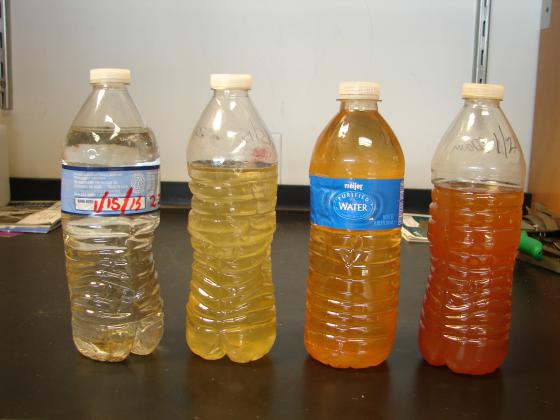The Flint Water Crisis is Not an Isolated Case

Throughout the United States, there is a clear connection between race, class and environmental justice. The Flint water crisis has made recent headlines, but for years there have been cases of environmental inequality throughout the entire country that uniquely impact communities of color and low-income communities. Safe drinking water is a fundamental human need, yet many communities throughout the world, and even here in the United States, lack access to clean water. Below are five examples that highlight areas in the United States that have faced environmental injustice as a result of contamination and pollution.
Flint, Michigan
In April 2014, the city of Flint switched its water supply from Detroit’s System to the Flint River in order to save money for the city. Despite complaints about the color, taste and odor of the water, the city officials said the water was safe to drink. Following the water supply switch, high levels of lead were found in the water at peoples’ homes and in the blood of children, causing doctors to recommend Flint stop using the Flint River as a source of water. Government officials disputed the research, until Governor Snyder finally announced a plan for Flint reconnected to Detroit’s water in October 2015. Currently, Flint is under a state of emergency in order to respond to this water crisis. For up to date about the Flint water crisis and ways you can get involved visit michigan.gov/flintwater.
Warren County, North Carolina
Warren County, which is a predominately black and low income community, became the home to 6,000 truckloads of soil laced with toxic PCBs in 1982. PCBs, which were banned in 1979, are human-made organic chemicals used in many items including plastics and electrical equipment and have been shown to be probable human carcinogens. In 1982, Warren County became known as the birthplace of the environmental justice movement, because when the community decided to take action to block the trucks as they entered the landfill, more than 500 protesters were arrested. After over 20 years, and a long detoxification process, the sight was finally considered decontaminated in 2004. Although an unsuccessful attempt, this was the first type of environmental justice action to gain widespread national coverage in the United States.
Bridgeton, Missouri
For decades, residents near the Westlake landfill have lived with toxic nuclear waste polluting their air and water. In 1973, thousands of tons of radioactive waste from the Manhattan Project was dumped in the landfill. A Missouri Department of Health and Senior Services report, published in 2014, found unusually high rates of cancer in the eight zip codes surrounding the Westlake landfill. In addition to the current health concerns, the toxic waters contaminated from the landfill have the potential to enter the Missouri River and eventually the Mississippi as well, impacting communities across the country. The Senate just passed a bill to transfer West Lake Landfill clean up to the Army Corp of Engineers, something residents have been advocating for, and now the House must also pass the bill.
Charleston, West Virginia
In 2014, a chemical spill leaked into the Elk River, which acts as a source for the regional water company. This spill left 300,000 people with tap water that was unsafe for use. The industrial chemical, used in coal processing, can cause headaches, eye and skin irritation, difficulty breathing and therefore the water company stated water should only be used for flushing toilets. This crisis cost residents and the state of West Virginia millions of dollars in lost productivity. Additionally, this crisis hit low income and minority communities the hardest, as those who could not afford bottled water faced the greatest burden.
Durango, Colorado
An estimated one million gallons of waste water spilled from an abandoned mine area in August 2015, causing the city of Durango and La Plata County, CO to declare a state of emergency. The water spill leaked heavy metals including iron, zinc and copper in the Animas River turning the water orange, making it unusable. As a state of emergency was declared, residents along the river, including the Navajo Nation, many of whom are farmers and ranchers who rely on the river for their livelihood, were unable to use the water for their crops and livestock, causing them to lose valuable income.
To learn more about environmental and climate justice visit the RAC's Environment Page and check out the NAACP Environmental and Climate Justice Program.
Related Posts

Inside the Inaugural L'Taken Canada

Five Definitions of Antisemitism


